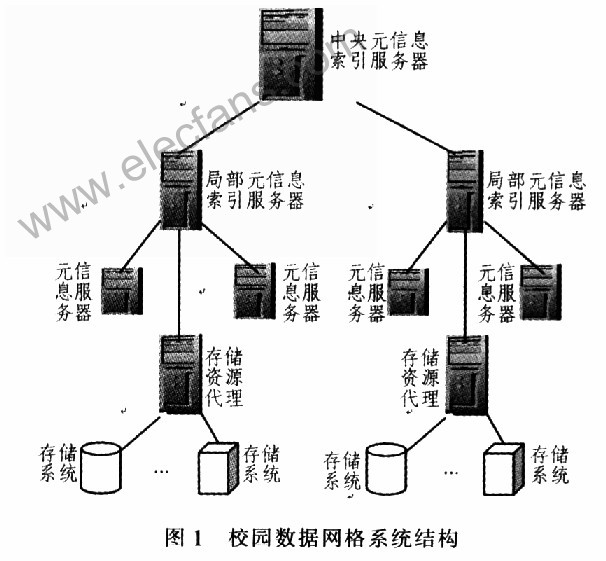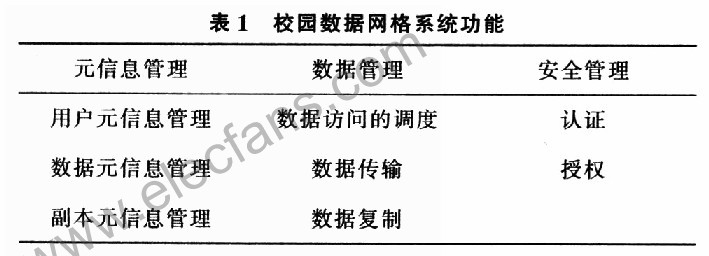With the deepening of education informatization and the development of the Internet, the teaching resources on the campus network are becoming more and more abundant, and the network resources are also increasing exponentially. The campus network center or computing center lacks effective integration and management of the existing resources of various departments. The utilization rate of various single resources is relatively low, and it is difficult to achieve full sharing and collaborative work of resources within the campus network.
The emergence of the grid provides technical support for the realization of network resource sharing. Grid is a way to connect geographically distributed and heterogeneous computing and storage resources and equipment through a high-speed network. Form a high-performance computing environment, thereby enabling new technologies for extensive resource sharing. The campus grid is different from general computing grids and information grids. Its resource providers are various resources of various departments and departments, including clusters, databases, high-performance computers, personal PCs, and storage devices. Users are generally faculty members and students of the school. They share computing, information, storage, experts, data, teaching and other resources through the campus grid. Therefore, the application of grid technology in the campus network enables the resources of the campus network to be shared in a larger area, greatly changing the current status of the application of the existing campus network.
1 Introduction to Grid Technology
1.1 Data grid
The data grid is a grid for large-scale distributed data storage and processing. It connects globally distributed and heterogeneous storage and data resources through a high-performance network, and provides related mechanisms to enable users to transparently access And processing large distributed data sets. Data grid research focuses on the storage and management, transmission, optimization of data access, data reliability and availability of large-scale distributed data, and scheduling of computing resources. The main goal of the data grid is to provide services and infrastructure for distributed data-intensive applications. Therefore, the data grid must provide a set of secure and high-performance protocols to ensure the transmission of large data sets and ensure that the data can According to the needs of users, copy and distribute within the whole network.
1.2 Metadata
Metadata is data that describes data and is structured data about data. It is used to describe data content, coverage, quality, management methods, data owners, data provision methods, etc. It is a bridge between data and data users.
2 Campus grid design
2.1 Design goals
With the rapid growth of campus network resources, more and more information islands have formed within the campus network. On the one hand, the user's demand for network resources, on the other hand, a large number of network resources cannot be used effectively. The campus data grid system is proposed to solve this contradiction. It can well realize the unified access and data sharing of heterogeneous data, make full use of the storage resources of the network, and provide a broad resource platform for scientific research and collaborative learning. The main objectives of the campus data grid system are as follows: 1) unified and transparent access interface: the campus data grid system provides users with a consistent and convenient method of accessing resources; 2) provides users with efficient data access: using replication technology Generate multiple data copies in the grid system to balance the system load, improve the response time of data access and the fault tolerance of the system; 3) unified resource naming: use a global unified naming mechanism to access and manipulate data to provide users with A global unified view, which is convenient for users to manage and operate resources; 4) Transparency of resource positioning: the system completes resource positioning and operation of resources through copy directory meta information and storage resource agents; 5) flexibility and fault tolerance : The system adopts a structure of local autonomy and global coordination; 6) Security: The data security of the system is guaranteed through an effective security mechanism.
2.2 Structural design of campus data grid system
The campus data grid system is based on the existing resources of the campus network. The system has a distributed, hierarchical architecture, which not only avoids the system bottleneck problem caused by centralized management, but also effectively solves the unified management of resources problem. As shown in Figure 1, the system is mainly composed of two parts: meta-information management and storage resource agent. Meta information management mainly provides meta information support for the realization of system functions. The storage resource agent mainly completes the data access and operation. Deploy storage resource agents within each autonomy of the system to implement the functions of an autonomous domain system. Users can transparently access various resources through the storage resource agent without having to care about the underlying physical operations. Provide a unified and transparent access method for users through storage resource agents and meta-information management to achieve the required functions. The user requests the storage resource agent, obtains the required meta information through the interaction of the storage resource agent and the meta information management, and schedules appropriate resources to implement operations such as access, modification, and data transmission.

The functions of the campus data grid system are mainly divided into three parts: meta-information management, data management and security management. As shown in Table l.

1) Meta information management User meta information management, data meta information management and copy meta information management. User meta-information management: Responsible for managing the relevant information of grid users, to realize unified management and control of users. Data element information management: responsible for managing various resources in the data grid system and providing users with a unified logical view. Replica meta-information management: responsible for managing all replicas in the data grid system, providing support for replica creation, selection and positioning, and replica consistency management.
2) Data management Scheduling of data access, data transmission and data replication. Scheduling of data access: Responsible for responding to user's access request, and performing corresponding operation according to user's request. Data transmission: responsible for the safe and efficient transmission of data between the corresponding nodes. Data replication: Responsible for completing the data replication operation in the data grid system and generating corresponding data copies.
3) Security management separately authenticates the user's identity and resources in the data grid system, and grants certain access rights to qualified users or resources.
2.3 Campus grid frame model and access process
2.3.1 Campus grid frame model
The biggest feature of the service grid is that all resources are packaged into services. The core problem is how to generate services and provide them to the users. According to the Open Grid Architecture (OGSA) idea, the literature has designed a service grid framework, as shown in Figure 2.
1) The resource pool includes all resources (dynamic changes) of the system, and the resources can be divided into multiple groups according to types.
2) Grid core middleware WSRF realizes two-way communication with resource pool and service pool. Through grid core middleware Web service resource framework (WS-Re-source Framework, WSRF), resources can be packaged as services or services can be deployed To the corresponding resource.
3) The service pool includes all virtual services, and the services in the entire grid system can be classified into multiple virtual services according to the type of service, and services with the same access interface belong to the same virtual service.
4) The virtual organization VO user or application completes one access through the service pool selection matching (can meet the user's conditions of service and build a virtual organization) to achieve, the virtual organization provides service providers or service consumers (users or applications) In a "temporary" market, the supply and demand relationship between service consumers and service providers is established through service negotiation. The representation of a virtual organization should usually include a set of service participants, a set of contexts among multiple participants, and a set of multiple policy rules.
2.3.2 Service access process
An activity as a service process on a grid system involving multiple users and services (see Figure 2) is described as follows:

1) The service publishing service is registered with an intermediary or directory service system.
2) Service discovery Service discovery is based on the results of service queries to determine the discovery target. Users or applications query services through the directory service system, including virtual services and real services; if no suitable service can be selected from the required virtual service group, a certain resource will be selected for deployment of such services, In order to make its function meet the needs of the user request; if no resources can be selected, the user request cannot be completed, and the state of the user request is set to fail.
3) Service binding The services in the service pool can meet the various functional requirements of the user's request. The user negotiates with the selected service provider based on the agreement and policy of both parties; when all the required service negotiations are successful, and based on these services The composite service can meet the functional requirements of the user, then the virtual organization is created, the user signs a contract with the service provider through the virtual organization, and is bound to the composite service through the contract.
4) Select the backup service. When a service fails or fails to meet the user's service quality requirements, a service failure event will be triggered. If the service is restored and does not violate the service quality agreement, the virtual organization activities will proceed as usual; otherwise in the same virtual service Backup service will be selected. The backup service must provide the user with access rights and meet the requested quality of service requirements. If such a backup service cannot be found, the user request cannot be satisfied, its status is set to failure, the virtual organization is also revoked, and the activity fails. If the activity is completed normally, the event about the normal end of the activity is triggered. After the administrator of the virtual organization obtains the event, the virtual organization is revoked, and the activity is successfully completed.
3 Conclusion
Aiming at the characteristics of the campus grid with many resources, large differences and wide range, a service-oriented hierarchical system architecture and service access model are designed. In this hierarchical model, physical resources are packaged into services and classified as virtual services, which makes grid services have better abstraction and unified interfaces. In this model, the directory service is the key. It provides service provider information to service consumers. Service providers and service consumers (users and applications) are established through service negotiation through the "temporary" market provided by virtual organizations. The relationship between supply and demand.
RAM/RFM Electric Heating Capacitors
RAM/RFM electric heating capacitors
Electric Heating Capacitor,Film Heating Capacitor,Electric Capacitor Bank,Induction Heating Capacitors
YANGZHOU POSITIONING TECH CO., LTD. , https://www.cnpositioning.com